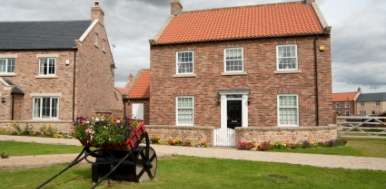Aberdeen Proving Ground, MD History
Aberdeen Proving Ground has a history steeped in the research, engineering and development of munitions. One of the oldest active military weapons testing and training areas in the U.S, APG was established in 1917 to be the new site for U.S Army Ordnance Testing. At the time, the nearest proving ground (Sandy Hook at Fort Hancock, New Jersey) was no longer able to conduct major munitions research because it was too close to the New York suburbs, making expansion for munitions testing impossible.
Colonel Colden Ruggles, the commanding officer of Sandy Hook, was commissioned to find the new test site. The requirements were that it had to be close to manufacturing and industrial centers, but far enough away that daily munitions testing wouldn't cause issues for the surrounding community. The search lead Col. Ruggles to a fertile farm area on the Chesapeake Bay, 25 miles north of Baltimore. This land was known for successfully growing corn, wheat, and tomatoes, and was a source of plentiful fishing for the canning industry. Of course, the locals were a bit reluctant to leave land that had been in their family for generations, but an Act of Congress and two presidential proclamations helped convince them find housing and farmland elsewhere. 3000 people were compensated, and relocated to other parts of Maryland, and the U.S government officially took hold of the area on October 20, 1917.
Facilities were built, and the proof-testing of field artillery weapons, ammunition, trench mortars, air defense guns, and railway artillery were conducted. After only a few years an ordnance training school and developmental testing of small arms was added to the mission. In the 1920s, much of the research was in developmental testing of powders, projectiles, bombs, and interior and exterior ballistics. In the 1930's, new activities were assigned to APG as a result of President D. Roosevelt's authorization of 2 million dollars for construction and expansion. In the buildup to World War II, even more land was acquired, and the Ordnance Museum, Ordnance Specialist School, and ballistic research lab were established at APG.
The Aberdeen Proving Grounds are where the first Bazooka was invented in the early days of World War II. Aware of how effective German tanks were, the question "How do we get a grenade powerful enough to punch through German tank armor from an infantryman to a target?" came up. The answer was, basically, "Put it on a rocket and fire it through a pipe!" Imagine being the first tester of that contraption!
APG is also where the world's first digital computer was made. During the 1950's and early 1960's, APG began the use of electronic computers, space study, and satellite tracking. Some results of this were the world's first digital computer, ENIAC (the electronic numerical integrator and calculator), and the first system-wide applications of Statistical Quality Control. Presently APG is a key leader in the Department of Defense's counter-terrorism efforts, and home to tenants such as: the U.S Army Research, Development and Engineering Command, U.S Army Test & Evaluation Command, U.S Army Chemical Materials Agency, and US Army Medical Research Institute of Chemical Defense.
Colonel Colden Ruggles, the commanding officer of Sandy Hook, was commissioned to find the new test site. The requirements were that it had to be close to manufacturing and industrial centers, but far enough away that daily munitions testing wouldn't cause issues for the surrounding community. The search lead Col. Ruggles to a fertile farm area on the Chesapeake Bay, 25 miles north of Baltimore. This land was known for successfully growing corn, wheat, and tomatoes, and was a source of plentiful fishing for the canning industry. Of course, the locals were a bit reluctant to leave land that had been in their family for generations, but an Act of Congress and two presidential proclamations helped convince them find housing and farmland elsewhere. 3000 people were compensated, and relocated to other parts of Maryland, and the U.S government officially took hold of the area on October 20, 1917.
Facilities were built, and the proof-testing of field artillery weapons, ammunition, trench mortars, air defense guns, and railway artillery were conducted. After only a few years an ordnance training school and developmental testing of small arms was added to the mission. In the 1920s, much of the research was in developmental testing of powders, projectiles, bombs, and interior and exterior ballistics. In the 1930's, new activities were assigned to APG as a result of President D. Roosevelt's authorization of 2 million dollars for construction and expansion. In the buildup to World War II, even more land was acquired, and the Ordnance Museum, Ordnance Specialist School, and ballistic research lab were established at APG.
The Aberdeen Proving Grounds are where the first Bazooka was invented in the early days of World War II. Aware of how effective German tanks were, the question "How do we get a grenade powerful enough to punch through German tank armor from an infantryman to a target?" came up. The answer was, basically, "Put it on a rocket and fire it through a pipe!" Imagine being the first tester of that contraption!
APG is also where the world's first digital computer was made. During the 1950's and early 1960's, APG began the use of electronic computers, space study, and satellite tracking. Some results of this were the world's first digital computer, ENIAC (the electronic numerical integrator and calculator), and the first system-wide applications of Statistical Quality Control. Presently APG is a key leader in the Department of Defense's counter-terrorism efforts, and home to tenants such as: the U.S Army Research, Development and Engineering Command, U.S Army Test & Evaluation Command, U.S Army Chemical Materials Agency, and US Army Medical Research Institute of Chemical Defense.



